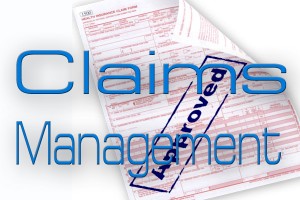What can insurance companies do to exploit all their unstructured information?
A typical big data scenario
Insurance companies collect huge volumes of text on a daily basis and through multiple channels (their agents, customer care centers, emails, social networks, web in general). The information collected includes policies, expert and health reports, claims and complaints, results of surveys, relevant interactions between customers and no-customers in social networks, etc. It is impossible to handle, classify, interpret or extract the essential information from all that material.
The Insurance Industry is among the ones that most can benefit from the application of technologies for the intelligent analysis of free text (known as Text Analytics, Text Mining or Natural Language Processing).
Insurance companies have to cope also with the challenge of combining the results of the analysis of these textual contents with structured data (stored in conventional databases) to improve decision-making. In this sense, industry analysts consider essential the use of multiple technologies based on Artificial Intelligence (intelligent systems), Machine Learning (data mining) and Natural Language Processing (both statistical and symbolic or semantic).
Most promising areas of text analytics in the Insurance Sector
Fraud detection
According to Accenture, in a report released in 2013, it is estimated that in Europe insurance companies lose between 8,000 and 12,000 million euros per year due to fraudulent claims, with an increasing trend. Additionally, the industry estimates that between 5% and 10% of the compensations paid by the companies in the previous year were due to fraudulent reasons, which could not be detected due to the lack of predictive analytic tools.
According to the specialized publication “Health Data Management”, Medicare’s fraud prevention system in the United States, which is based on predictive algorithms that analyze patterns in the providers’ billing, in 2013 saved more than 200 million dollars in rejected payments.
Text analytics techniques allow analyzing the text of insurance claims, settlement notes, etc. to prioritize their study by the company’s Research Unit. For example, common patterns are sometimes detected in claims from a multiple accident, which can be an indicator of organized fraud.
Quick decision making, using the appropriate indicators (KPI, Key Performance Indicators), helps to prevent fraud and increase the benefits. In this sense, text analytics, at times through dashboards, provide vital information to make quickly well-justified decisions.
Analysis of the Voice of the Customer
The customer experience is a key element in the commercial success in the insurance sector, where differentiation between the insurers’ products is not easy. Companies are trying to know their customers and their opinions by means of satisfaction surveys and directly through social networks. Text analytics permits to classify interactions according to the products or services offered, the marketing channels used, the operations employed, etc. In addition, automatic opinion and sentiment analysis techniques enable to identify the polarity (positive, negative or neutral sentiment) about issues or specific aspects of a product, channel or procedure.
When this type of analysis is applied to comments in open social networks, it is possible to detect also trends in the sector, identify the brand perception (which concepts, activities or entities we are associated with, and how we differentiate ourselves from competitors), qualify the corporate reputation of our company or brand, or provide early warning of possible reputational crises.
The activities that have to do with market research and competition analysis are essential to determine the company’s product strategy.
Claims Management
The analysis of complaints and claims is another natural area for the use of text mining. Regardless of the inbound channel, complaints can be classified automatically according to the insurer’s products, services or operations, as well as their gravity, in order to direct them to the appropriate agents so that they receive in each case the appropriate treatment.
Subrogation in Property & Casualty Insurance
Subrogation consists of the exercise by the insurer of the rights of the insured, and also the initiation of the appropriate proceedings against the injurer. The legitimization of this right aims at avoiding the insured to enrich himself or herself through exercising simultaneously the damage and insurance actions.
It is estimated that 5% of the cases in the P&C (Property and Casualty) area that should obey subrogation, do not. Text mining and data mining techniques allow to extract automatically subrogation indicators from the reports of the sinister, with a significant impact on the operating account.
Text analytics techniques in the Insurance Industry
In short: among the text analytics technologies beneficial for the insurance sector, we can highlight:
- Sentiment analysis
- Automatic classification
- Entity Recognition or Extraction
- Detection of semantic relation patterns
- Development and application of specialized ontologies (or taxonomies) in the insurance domain
- Content crawling on the Internet
- Analysis of the Voice of the Customer
- Analysis of the User Experience
Benefits that text mining provides to the insurance industry
- Improves the employees’ productivity
- Reduces the workload of Customer Service Centers
- Reduces the response to clients’ time
- Early detection of evidence of fraud and fraudulent customers
Value provided by text mining to insurance companies
- Increases the customers’ and employees’ degree of satisfaction
- Improves the client retention and recommendation
- Improves the vision on the market scenario
- Reduces the indirect costs in the provision of services
- Increases benefits, as a result of all the previous ones
MeaningCloud, our cloud-based text analytics service, offers solutions that provide value to insurance companies in the scenarios mentioned above. Contact us and we will advise you on how to employ semantic technologies to improve your services and results.
Jose C. Gonzalez
@jc_gonzalez
What can insurance companies do to exploit all their unstructured information?
Insurance companies collect huge volumes of text on a daily basis and through multiple channels (their agents, customer care centers, emails, social networks, web in general). The information collected includes policies, expert and health reports, claims and complaints, results of surveys, relevant interactions between customers and no-customers in social networks, etc. It is impossible to handle, classify, interpret or extract the essential information from all that material.
[Translation from Spanish by Luca de Filippis]





